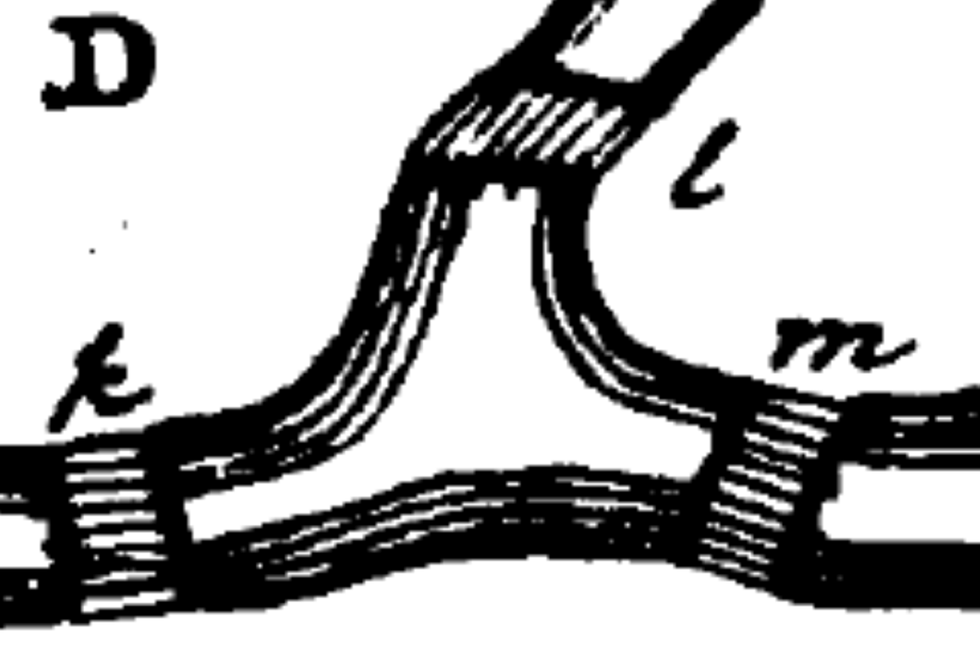Doughnut
From the Series: Topology as Method
From the Series: Topology as Method

The London Underground map, designed by Harry Beck in 1931, is one of Britain’s top ten design icons. Graphically innovative, it was the first transport map to privilege the relative positions of stations, lines, and stations’ connective relations, rather than their geographic locations in space. The London tube map is also the poster child of topology in that it brings visual clarity to the many theoretical possibilities offered by topology—a branch of mathematics often resistant to visual representation. Topology has proven a productive model to unhook the management of territory from cartographic fixity and foreground how places are connected to each other beyond their actual geographic position. Indeed, what matters in topology is not the distance between points but the characteristics that an object maintains in the process of torsion, distortion, and transformation. Topology is thus uniquely positioned to reconcile the tension between the fixity of cartography and the social, economic, and political contingencies of border management.
Topology is often used as shorthand for the geography of connections and networks that extends the political and economic reach of states beyond their physical borders (see Allen 2016). But if the metaphoric reverberations of topology are certainly worth exploring—notably to account for the operation of multinationals supplementing the state—they tend to leave space itself disembodied, abstract, and flat (Billé, forthcoming). Yet, ironically, where topology is perhaps most productive is in the very materiality inherent to the concept—this rubber sheet surface (cf. Leach 1961) on which a state’s spatial and material constraints interact dynamically with its operational plasticity.
From a handful of shapes that have fired the imagination of topologists, I propose to explore the conceptual relevance of the doughnut with regard to Russia’s current “geopolitical archipelago”—a grouping of “diverse spaces that have unusual forms of sovereignty” (Toal 2017, 283). During the Soviet period, Russia was home to dozens, possibly hundreds, of so-called “closed spaces,” ranging from border exclusion zones to villages, sometimes entire cities, with links to the military-industrial complex, like the port city of Vladivostok for example. In the many exclusionary spaces that still remain in contemporary Russia, notably villages and settlements on the Russia-China border, restrictions continue to apply to both foreigners and nonresident Russians. For people residing in these exclusion zones, it can feel like being utterly cut off from the world: visits from outsiders are restricted and regulated, thus making it virtually impossible to open a business for example. But being a resident in a restricted zone also confers special status from which to derive pride: membership in a special entity in an otherwise homogeneous national space (Ryzhova 2014). Or so it tends to be imagined.
Given that the modern understanding of political sovereignty implies territorial homogeneity (Billé 2018), such closed spaces would seem to constitute Agambean “spaces of exception”—places outside the norm. It is here that the figure of the doughnut—and specifically its relation to its hole—can help account for the nonhomogeneous nature of Russia’s contemporary space. As Roberto Casati and Achille C. Varzi write (1995, 19), seemingly stating the obvious, “no hole can exist alone, without the object in which it is a hole.” This statement does two important things however: it draws attention to the reflexive relation between the hole and the material that surrounds it, and also to the significance of the contact surface between the two. In his own reflections on what a hole is and how to define it, mathematician Stephen Barr (1989, 167) writes that it might be thought to depend on what surrounds the doughnut: “After all, its very shape is made up by, if not of, donut material, so perhaps the best answer is that it is a null set of donut particles.”
Framed through and defined by their surroundings, restricted zones are thus a product of, rather than an exception to, Russia’s sociocultural and political environment. They are also eminently topological in that their boundaries are subject to sudden changes, making it difficult for people to know when or if they are breaking the law. Like a doughnut whose shape can be distorted into a coffee cup, the “hole” changes in size but the object remains homeomorphic (i.e., topologically equivalent) to itself.
Foregrounding the rubbery nature of topology also implies a lesser reliance on the visual and the mappable (the topographic), thereby making space for a multisensorial, indeed synesthetic, approach to border studies—one that mobilizes touch, smell, and sound (see Billé 2018; Min, forthcoming). In the context of Russia’s restricted zones, boundaries are often unmarked and unmapped, yet this invisibility does not index a diminished potency. The zone’s boundaries are relational—bending and twisting in line with central powers directives, regional forces, administrative constraints, and local interests and opportunities. Conceptualized as a topological entity, then, the spatially labile restricted zone can offer a useful diagnostic of Russia’s territorial management as it supplements its political topography—the zone’s spatial plasticity indexing the power dynamics at play between central, regional, and local political actors.
Allen, John. 2016. Topologies of Power: Beyond Territory and Networks. London: Routledge.
Barr, Stephen. 1989. Experiments in Topology. New York: Dover Publications. Originally published in 1964.
Billé, Franck. 2018. “Skinworlds: Borders, Haptics, Topologies.” Environment and Planning D: Society and Space36, no. 1: 60–77.
———. Forthcoming. “Voluminous: An Introduction.” In Voluminous States: Sovereignty, Materiality, and the Territorial Imagination, edited by Franck Billé. Durham, N.C.: Duke University Press.
Casati, Roberto, and Achille C. Varzi. 1995. Holes and Other Superficialities. Cambridge, Mass.: MIT Press.
Leach, Edmund R. 1961. Rethinking Anthropology. London: Athlone Press.
Min, Lisa Sang Mi. Forthcoming. “Echolocation: Within the Sonic Fold of the Korean Demilitarized Zone.” In Voluminous States: Sovereignty, Materiality, and the Territorial Imagination, edited by Franck Billé. Durham, N.C.: Duke University Press.
Ryzhova, Natalia. 2014. Freedoms, the State and Security: Border Exclusion Zones in Post-Soviet Russia. MPhil diss., University of Cambridge.
Toal, Gerard. 2017. Near Abroad: Putin, the West, and the Contest over Ukraine and the Caucasus. Oxford: Oxford University Press.